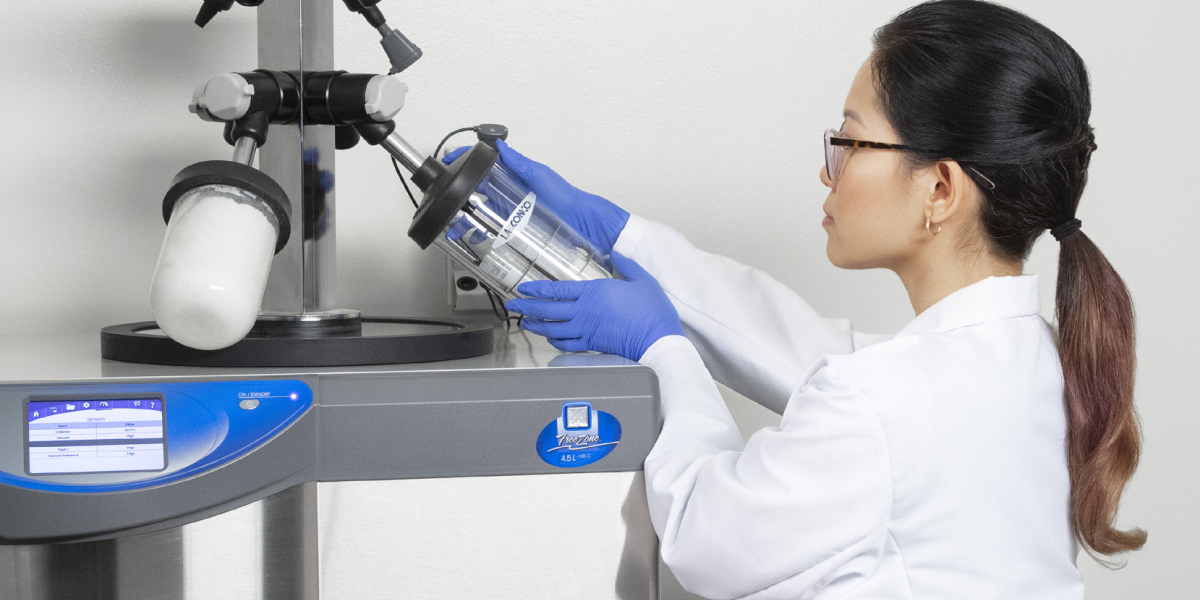How to freeze dry the 6 most challenging samples

Lyophilization, or freeze drying, is a technique often used in university and life science laboratories. During the freeze dry process, sublimation occurs as a result of a cycle of:
- Prefreezing,
- Primary drying
- Secondary drying
It's a technique well suited for sample preservation, restoration of water-damaged items and—of course—an ever-important vehicle for sample prep. Sounds simple enough, right? Of course there's much more to freeze drying and we've covered that in-depth on more than one occasion.
Our focus: What goes wrong (not what goes right)
Say you know how to properly care for your freeze dryer and religiously stay away from common lyophilization mistakes (like not knowing your sample's eutectic point, for example). Why are there still some samples that remain challenging time and time again? What happens when you do everything right and your sample still makes you sweat?
Don't kick your freeze dryer. (Seriously, please don't kick it. We wouldn’t know how to explain that service call.)
Six challenging samples and what you need to know to lyophilize them
Challenger #1: Tert Butyl
.jpg)
Before you curl your fists in anger to Tert Butyl's gummy consistency after lyophilizing, here are a few soothing words: It's not your fault. (I repeat: It's not your fault.) While the compound looks like a perfect freeze dry candidate on paper, our experts have received many customer calls about the output having a gummy consistency—and, unfortunately, that's simply going to happen when you're working with Tert Butyl. As you work through the lyophilization process, know that you're likely not going to make it all the way to a dry powder.
Challenger #2: DMSO (Dimethyl Sulfoxide)
Because DMSO has a very high boiling point, it's hard to evaporate in a standard evaporator. Freeze drying, then, should be the perfect alternative, right? Well, it is—but it will eventually attack different components of your freeze dryer. For example, you'll need to replace the rubber and plastic pieces, as they're apt to show wear pretty quickly when working with this compound. Also, for applications using DMSO, make sure your system has a glass lid to help lessen the replacement burden.
Challenger #3: Alcohols
Alcohols (like methanol and ethanol) have a very low freezing point, so they present a temperature differential conundrum. Ethanol, for example, freezes at -117°C. Because it's not possible to get a freeze dryer with a collector temperature of -137°C, you must dilute these substances to 10 percent or less by adding an aqueous solution. Then, you can use a -105º freeze dry system to complete your work. Note that if you're working at all with acids, opt for the system with the corrosion-resistant, PTFE collector.
Challenger #4: Salts
Just like salt alters the boiling point of water on your stovetop, it alters the freezing point of samples you're trying to lyophilize. In addition, exposure to salt over time will cause stainless steel surfaces in freeze dryers to rust. If you're going to be working with compounds containing salt, be sure to invest in a cascade-style (-84° or-105° C) freeze dryer with PTFE-coated components to avoid costly damage.
Challenger #5: Sugars
Sugars won't change the eutectic temperature of your sample, but they could ruin your vacuum pump if they pass into the equipment and crystalize there—and, as we all know, a lyophilizer without a working vacuum pump isn't very productive in the laboratory. You can protect your pump, however, by placing a secondary HEPA filter between the freeze dryer and the pump so that any sugar that bypasses the cold coils gets trapped before it can do any damage.
Challenger #6: Oils
If you're trying to freeze dry a substance with oil, your output will never be an entirely solid powder. The oil in the sample will sublimate first and leave behind a slicker consistency, but this isn't a deal-breaker. As long as you're lyophilizing for sample prep and don't need your sample for long-term storage, you can get rid of most of the moisture and carry on with your work.
| chevron_left | Filtered Fume Hoods far less costly to operate, better for environment | Articles | 7 questions to answer when choosing a fume hood | chevron_right |






